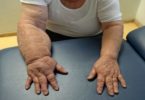What's in this article?
What is menstruation?
Menstruation (men-STRAY-shuhn) is a woman’s monthly bleeding. When you menstruate, your body sheds the lining of the uterus (womb). Menstrual blood flows from the uterus through the small opening in the cervix and passes out of the body through the vagina. Most menstrual periods last from 3 to 5 days.
Girls usually start having menstrual periods between the ages of 11 and 14. Women usually start to have fewer periods between ages 39 and 51. Women in their 40s and teens may have cycles that are longer or change a lot. If you are a teen, your cycles should even out with time. If you are nearing menopause, your cycles will probably get longer and then will stop.
What’s normal?
The menstrual cycle, which is counted from the first day of one period to the first day of the next, isn’t the same for every woman. Menstrual flow might occur every 21 to 35 days and last two to seven days. For the first few years after menstruation begins, long cycles are common. However, menstrual cycles tend to shorten and become more regular as you age.
Your menstrual cycle might be regular about the same length every month or somewhat irregular, and your period might be light or heavy, painful or pain-free, long or short, and still be considered normal. Within a broad range, “normal” is what’s normal for you.
Keep in mind that use of certain types of contraception, such as extended-cycle birth control pills, will alter your menstrual cycle. Talk to your health care provider about what to expect.
Perimenopausal Menstrual Cycle
Perimenopause, which means “around menopause,” refers to the 2 to 8 years of changing hormone levels and related symptoms that lead up to menopause. The most common sign of perimenopause is longer, often irregular menstrual cycles that are caused by hormonal ups and downs.
Most women start perimenopausebetween ages 39 and 51. Some women begin to notice menstrual changes and premenstrual syndrome (PMS) symptoms in their late 30s when hormones begin to fluctuate and fertility naturally declines. Other women don’t notice perimenopausal changes until their late 40s.
What happens during the menstrual cycle?
In the first half of the cycle, levels of estrogen (the “female hormone”) start to rise. Estrogen plays an important role in keeping you healthy, especially by helping you to build strong bones and to help keep them strong as you get older. Estrogen also makes the lining of the uterus (womb) grow and thicken. This lining of the womb is a place that will nourish the embryo if a pregnancy occurs. At the same time the lining of the womb is growing, an egg, or ovum, in one of the ovaries starts to mature. At about day 14 of an average 28-day cycle, the egg leaves the ovary. This is called ovulation.
After the egg has left the ovary, it travels through the fallopian tube to the uterus. Hormone levels rise and help prepare the uterine lining for pregnancy. A woman is most likely to get pregnant during the 3 days before or on the day of ovulation. Keep in mind, women with cycles that are shorter or longer than average may ovulate before or after day 14.
A woman becomes pregnant if the egg is fertilized by a man’s sperm cell and attaches to the uterine wall. If the egg is not fertilized, it will break apart. Then, hormone levels drop, and the thickened lining of the uterus is shed during the menstrual period.
How can I track my menstrual cycle?
To find out what’s normal for you, start keeping a record of your menstrual cycle on a calendar or with the help of a smartphone application. Begin by tracking your start date every month for several months in a row to identify the regularity of your periods.
If you’re concerned about your periods, then also make note of the following every month:
- End date. How long does your period typically last? Is it longer or shorter than usual?
- Flow. Record the heaviness of your flow. Does it seem lighter or heavier than usual? How often do you need new sanitary protection?
- Abnormal bleeding. Are you bleeding in between periods?
- Pain. Describe any pain associated with your period. Does the pain feel worse than usual?
- Other changes. Have you experienced any changes in mood or behavior? Did anything new happen around the time of change in your periods?
Medicine for menstrual pain and bleeding
Try a nonprescription medicine to help relieve your pain and bleeding. Start taking the recommended dose of pain reliever when symptoms begin or 1 day before your menstrual period starts. If you are trying to become pregnant, talk to your doctor before using any medicine. Be safe with medicines. Read and follow all instructions on the label.
- Nonsteroidal anti-inflammatory drugs (NSAIDs), such as ibuprofen(for example, Advil), reduce menstrual cramps, pain, and bleeding by lowering the level of the hormone prostaglandin.
- If NSAIDs do not relieve the pain, try acetaminophen, such as Tylenol.
- Take the medicine for as long as the symptoms would normally last if you did not take the medicine.
Be sure to follow all labels and directions. Do not take aspirin if you are younger than 20 because of the risk of Reye syndrome.
Additional ways to relieve menstrual cramps
- Apply heat to your abdomen with a heating pad or hot water bottle, or take a warm bath. Heat improves blood flow and may decreasepelvic pain.
- Lie down and elevate your legs by putting a pillow under your knees.
- Lie on your side and bring your knees up toward your chest. This will help relieve back pressure.
- Get regular exercise. This improves blood flow, produces pain-fighting endorphins, and may reduce pain.
- If you have vaginal pain with cramps, try using pads instead of tampons.





